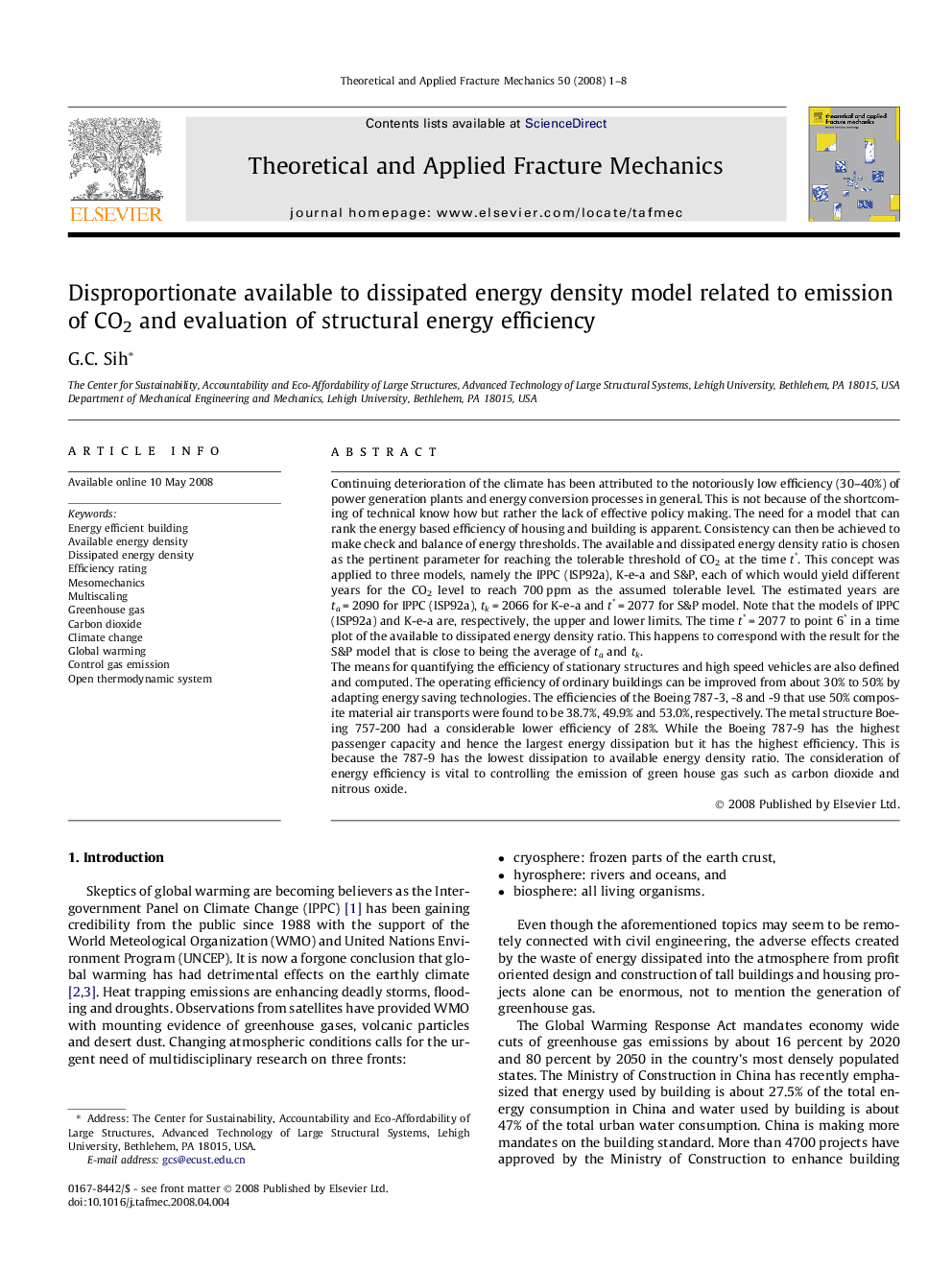| Article ID | Journal | Published Year | Pages | File Type |
|---|---|---|---|---|
| 808779 | Theoretical and Applied Fracture Mechanics | 2008 | 8 Pages |
Continuing deterioration of the climate has been attributed to the notoriously low efficiency (30–40%) of power generation plants and energy conversion processes in general. This is not because of the shortcoming of technical know how but rather the lack of effective policy making. The need for a model that can rank the energy based efficiency of housing and building is apparent. Consistency can then be achieved to make check and balance of energy thresholds. The available and dissipated energy density ratio is chosen as the pertinent parameter for reaching the tolerable threshold of CO2 at the time t∗. This concept was applied to three models, namely the IPPC (ISP92a), K-e-a and S&P, each of which would yield different years for the CO2 level to reach 700 ppm as the assumed tolerable level. The estimated years are ta = 2090 for IPPC (ISP92a), tk = 2066 for K-e-a and t∗ = 2077 for S&P model. Note that the models of IPPC (ISP92a) and K-e-a are, respectively, the upper and lower limits. The time t∗ = 2077 to point 6∗ in a time plot of the available to dissipated energy density ratio. This happens to correspond with the result for the S&P model that is close to being the average of ta and tk.The means for quantifying the efficiency of stationary structures and high speed vehicles are also defined and computed. The operating efficiency of ordinary buildings can be improved from about 30% to 50% by adapting energy saving technologies. The efficiencies of the Boeing 787-3, -8 and -9 that use 50% composite material air transports were found to be 38.7%, 49.9% and 53.0%, respectively. The metal structure Boeing 757-200 had a considerable lower efficiency of 28%. While the Boeing 787-9 has the highest passenger capacity and hence the largest energy dissipation but it has the highest efficiency. This is because the 787-9 has the lowest dissipation to available energy density ratio. The consideration of energy efficiency is vital to controlling the emission of green house gas such as carbon dioxide and nitrous oxide.
